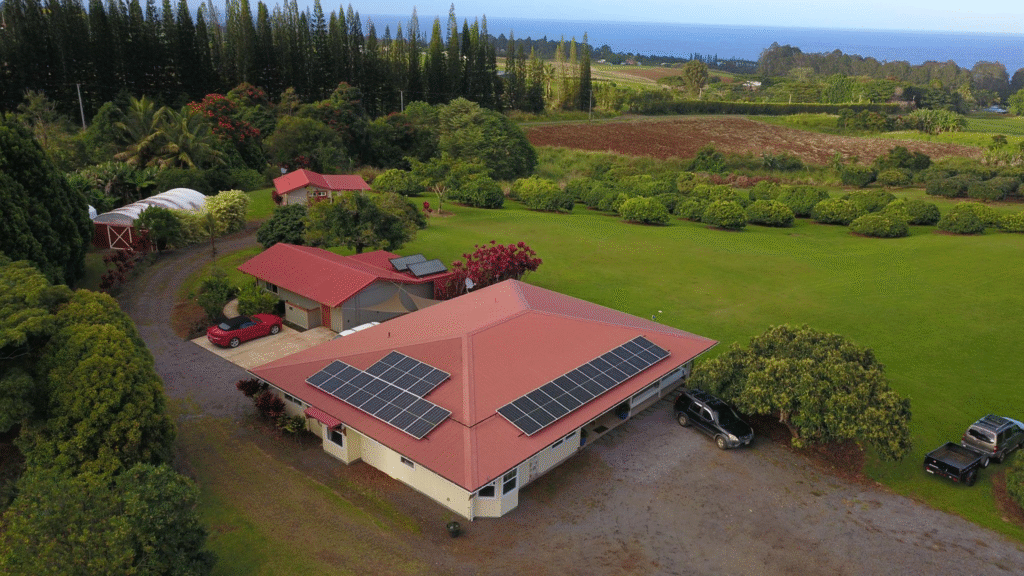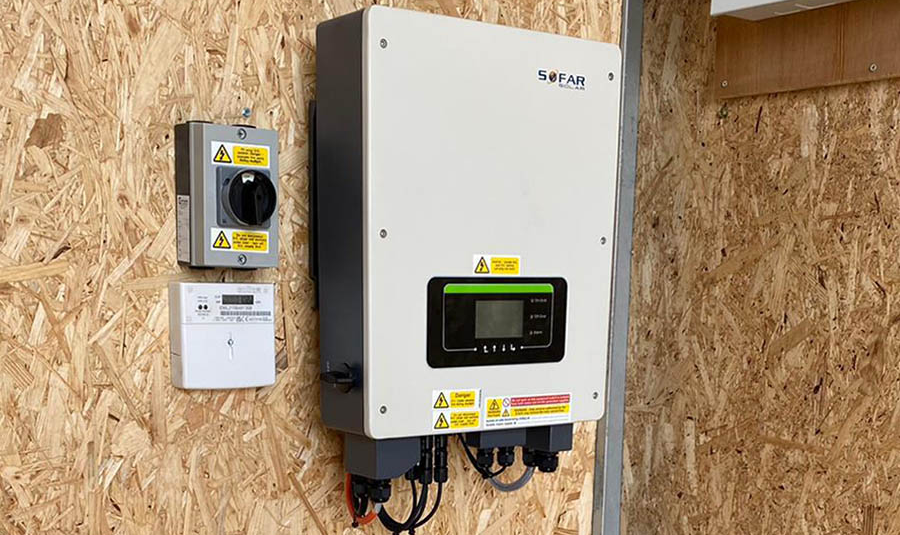
Switching to solar power might sound like a big step, but it’s simpler than you think, especially with BlueSky Hawaii by your side. Once you decide you’re ready to take control of rising utility costs and invest in clean energy, our team handles everything from design and permitting to installation, monitoring, and maintenance.
But before we dive into the process, let’s answer the question many Big Island homeowners have: “How do solar panels work?” Understanding the basics will help you feel confident in your decision to go solar, and we’re here to make it clear and straightforward.
The Basics: Turning Sunshine into Power
Solar panels work by capturing sunlight and turning it into usable electricity through a process called the photovoltaic effect. Each panel contains many solar cells, which release electrons when hit by sunlight, creating an electrical current that can power your home.
In addition to photovoltaic panels for electricity, there are also solar thermal collectors, designed to absorb heat for purposes like water or space heating. On the Big Island, most homeowners choose photovoltaic systems for reliable, everyday power.
These panels can be mounted on rooftops or installed as ground systems, and whether large or small, they operate quietly, produce no emissions, and deliver clean energy for years to come.
Inside a Solar Panel
A solar panel works by turning sunlight into electricity, and you can think of it like a layered sandwich. The top glass layer shields it from weather, while the middle layers of silicon handle the actual energy conversion. A thin mix of metals helps guide the electrical flow. When sunlight — made up of tiny particles called photons — strikes these silicon layers, it knocks electrons loose. The freed electrons create an electrical current.
The silicon inside each panel is specially treated — one layer carries a positive charge and the other a negative charge, forming an electric field. When photons hit this field, electrons are set in motion, and metal conductors capture that energy so it can be sent through your system.
Even during cloudy or rainy Big Island days, panels can still produce power because they draw from various parts of the sunlight’s spectrum, not just the visible rays. Their performance might dip in heavier weather, but with minimal upkeep, like clearing off dust or leaves, they’ll keep delivering reliable clean energy for decades.
The Role of the Inverter
While solar panels capture sunlight and turn it into electricity, they produce direct current (DC) — a steady flow of electricity in one direction. Your home, however, is wired for alternating current (AC), where electricity changes direction many times a second. That’s where the inverter steps in. It’s the bridge between your solar panels and your home’s electrical system, converting DC into safe, usable AC so your appliances, lights, and devices work perfectly.
BlueSky Hawaii carefully matches each home’s setup with the inverter type that will deliver the best performance for your roof layout, sunlight conditions, and energy goals.

Your Home’s Electrical Panel
Your home’s main electrical panel is the control center for all the electricity that flows through your property. It distributes power from the utility grid (and, with solar, from your panels) to every outlet, appliance, and light in the house.
When solar panels are added, your electrical panel must be capable of handling the extra power flowing into your home’s system. If it’s outdated or too small, it can create safety issues or limit the efficiency of your solar energy setup.
In many cases, upgrading to a solar-ready electrical panel ensures your home can safely manage the increased load. This type of panel can:
- Safely handle the output from your solar system.
- This can help you qualify for certain tax credits when you purchase your system.
- Support future upgrades, such as electric vehicle chargers or battery storage.
At BlueSky Energy Hawaii, we assess your electrical panel during your solar consultation. If an upgrade is needed, we’ll design and install a solution that’s built for Big Island homes, meets local electrical codes, and supports your energy goals for years to come.

Solar Monitoring
Every BlueSky Hawaii system comes with built-in monitoring, giving you 24/7 access to see exactly how your panels are performing. You can track daily, monthly, or yearly production from your phone or computer, so you’ll always know how much clean energy your system is generating. If anything unusual happens — like a drop in performance — the monitoring system flags it so it can be addressed quickly. This way, you get peace of mind knowing your investment is working at its best.
Net Metering
Net metering works like a power bank for your home’s electricity. When your solar panels produce more energy than you’re using, the surplus flows back to the utility grid. In return, your meter records these contributions as energy credits. Later, when your panels aren’t generating enough — such as at night or on overcast Big Island days — you can draw from those credits instead of buying power from the utility.
In most cases, credits can carry over from month to month. That’s especially useful in Hawaii’s sunny seasons, when you may produce more than you need. Program details vary by utility, and credit value can change depending on rate structures or the time of day your excess power is sent to the grid. Understanding your local net metering policy helps you maximize the value of your system.
Conclusion
Now that you know how solar panels work, you can see how simple it is to generate your clean energy. At BlueSky Energy Hawaii, we make the switch easy with our comprehensive residential solar services, from permitting to final connection — so you can enjoy lower bills and greater energy independence.
Ready to see what solar can do for your Big Island home? Go Solar Today!
FAQs
Do solar panels work on cloudy or rainy days on the Big Island?
Yes! While solar panels perform best in direct sunlight, they can still generate electricity on cloudy or rainy days because they capture different wavelengths of light. Production may be lower, but you’ll still be making clean energy year-round — one of the many reasons why you should go with BlueSky Energy Hawaii for reliable, all-weather performance.
How long do solar panels last in Hawaii’s climate?
High-quality panels installed by BlueSky Energy Hawaii are built to last 25 years or more. Our equipment is designed to withstand salt air, high humidity, and the intense sun, all while delivering consistent results for decades.
Will solar panels power my home at night?
Solar panels don’t produce energy after sunset. However, you can still use solar power at night through net metering credits or with a battery storage system that saves excess energy for later use. BlueSky Energy Hawaii can help you choose the setup that works best for your needs.
What maintenance do solar panels need?
Solar panels are low-maintenance. A periodic rinse to remove dust or leaves and occasional inspections are usually enough to keep them performing efficiently. With our monitoring systems, we can quickly spot and fix issues — another reason to go with BlueSky Energy Hawaii for ongoing care and support.




Recent Comments